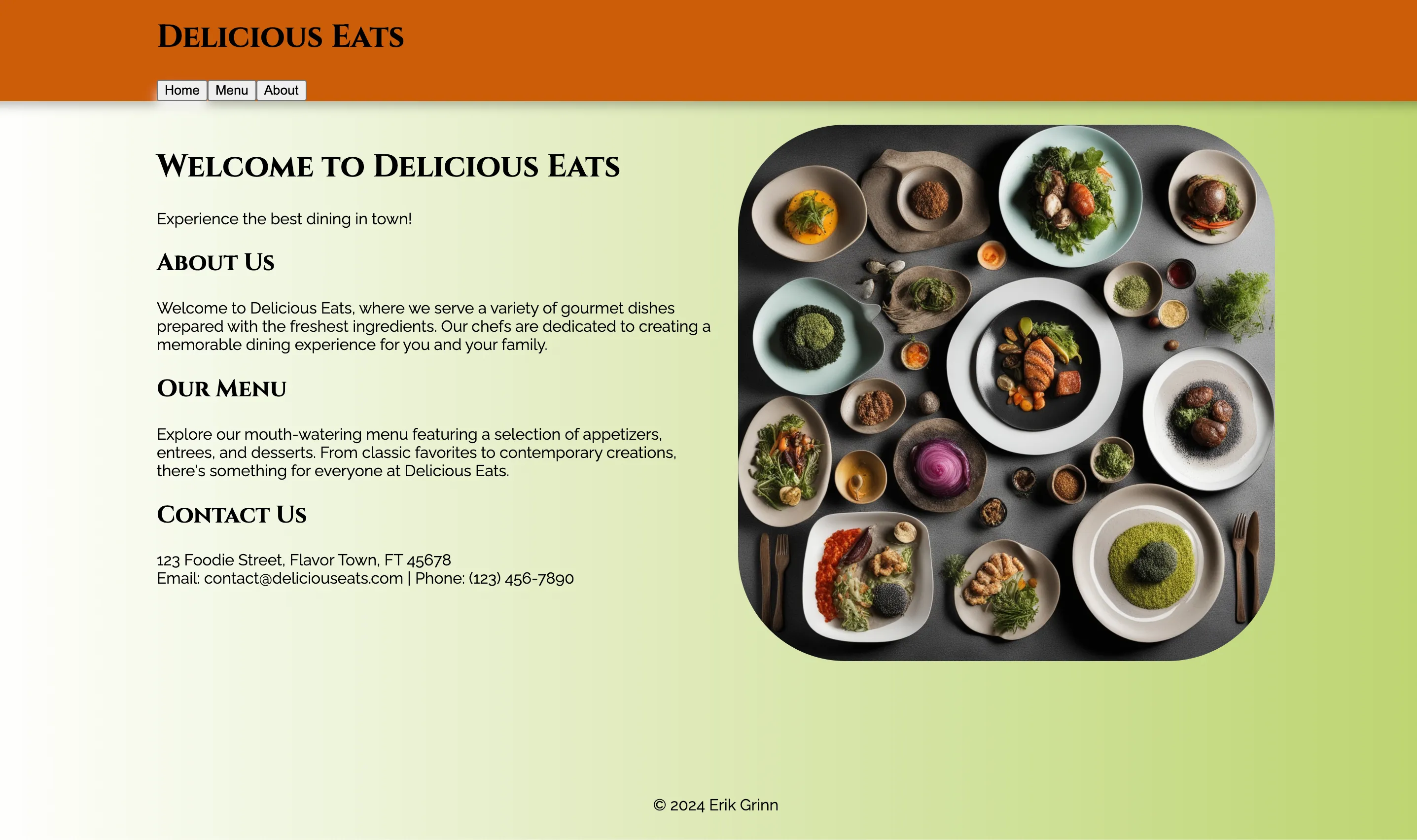Restaurant Page
 restaurant page
restaurant page
A webpage that focuses on multiple tabs, with emphasis on keeping the header in-tact while replacing the body. This project is a simple restaurant webpage built using vanilla JavaScript, HTML, and CSS. It demonstrates key coding concepts such as modular JavaScript, DOM manipulation, and webpack for bundling assets.
Key Coding Concepts
Modular JavaScript
The project is organized into multiple JavaScript modules, each responsible for a specific part of the webpage. This helps in keeping the codebase clean and maintainable. For example:
src/home.js: Handles the home page content.src/menu.js: Handles the menu page content.src/about.js: Handles the about page content.
DOM Manipulation
The project heavily relies on DOM manipulation to dynamically create and update the content of the webpage. Elements are created using document.createElement and appended to the DOM using methods like appendChild. For example, in src/home.js:
const heroTitle = document.createElement('h1');
heroTitle.textContent = 'Welcome to Delicious Eats';
hero.appendChild(heroTitle);
Webpack
Webpack is used to bundle JavaScript modules and other assets like CSS and images. The configuration is defined in webpack.config.js. Key features include:
Entry point: [‘src/index.js’] Output: Bundled files are output to the dist directory. Loaders: CSS and HTML loaders are used to handle CSS and HTML files. Plugins: HtmlWebpackPlugin is used to generate the HTML file. Event Handling Event listeners are used to handle user interactions, such as clicking navigation buttons to switch between different sections of the webpage. For example, in src/index.js:
homeBtn.addEventListener('click', () => {
contentDiv.innerHTML = '';
contentDiv.appendChild(homeDiv);
contentDiv.appendChild(homeImage);
});
CSS Styling
The project uses an external CSS file src/styles.css to style the webpage. It includes custom properties (CSS variables) for consistent theming and media queries for responsive design.
Asset Management
Images are imported and used in the JavaScript modules. Webpack’s asset management capabilities are leveraged to handle these images. For example, in src/menu.js:
import image1 from "./images/menu-dish-1.jpg";
const menuImage1 = document.createElement("img");
menuImage1.src = image1;
Getting Started
Prerequisites
Node.js and npm installed
Installation
- Clone the repository:
git clone https://github.com/yourusername/odin-restaurant-page.git
- Navigate to the project directory:
cd odin-restaurant-page
- Install dependencies:
npm install
- Deploy development server:
npm run dev